The tomb on the island of Gavrinis (ca. 3500 bce) in Brittany, France, demonstrates the experimental nature of megalithic structures (Figure 10.37a and 10.37b). Entering by boat from the ocean through the narrow Gulf of Morbihan, one comes to a complex set of bays, inlets, and small islands, one of which near the mouth of the gulf is the site of the structure. It is built close to the edge of the island and was clearly meant to be appreciated from the water, even though the water’s edge might have been not as close back then as it is today. The mound consists of
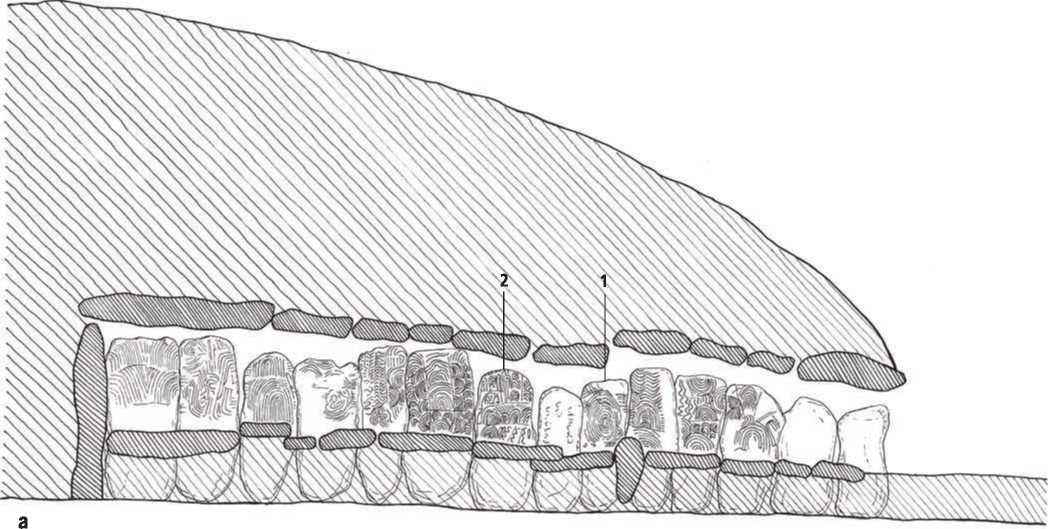

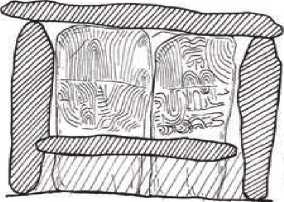
Figure 10.37a, b, c: Gavrinis Cairn, Brittany, France: (a) section, (b) plan, (c) transverse section through inner chamber. Source: Andrew Ferentinos
A single rectangular (nearly square) slab-built burial chamber with a passage leading to it, all of which is embedded in a carefully constructed, multi-tiered, stone mound heaped over with earth to produce a hill. The mound has a diameter of about 50 meters. The chamber is built of carefully placed slabs. The biggest of these is the ceiling slab, which weighs nearly 17 tons. The stones that form the passage and the burial chamber are almost totally decorated with carved symbols, zigzags, and patterns, some of which seem to represent axes or staffs. A common horn-like motif may symbolize cattle; a shape conventionally called the shield may be a very stylized human figure (Figures 10.38, 10.39, 10.40. 10.41, and 10.42).
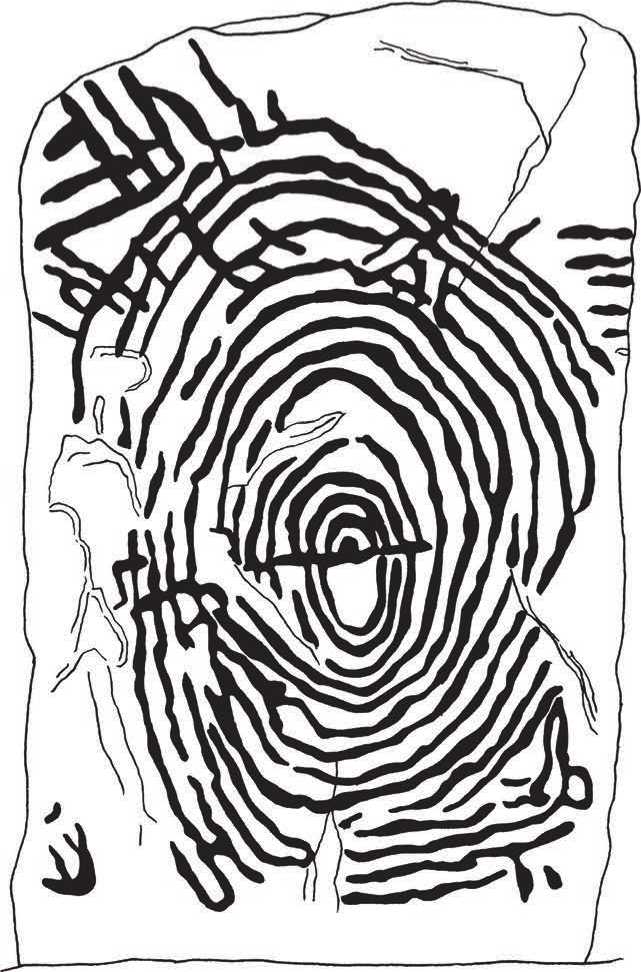
Figure 10.38: Gavrinis Cairn, Brittany, France, interior. Source: Andrew Ferentines
Figure 10.39: Gavrinis Cairn, Brittany, France, interior. Source. Andrew Ferentinos
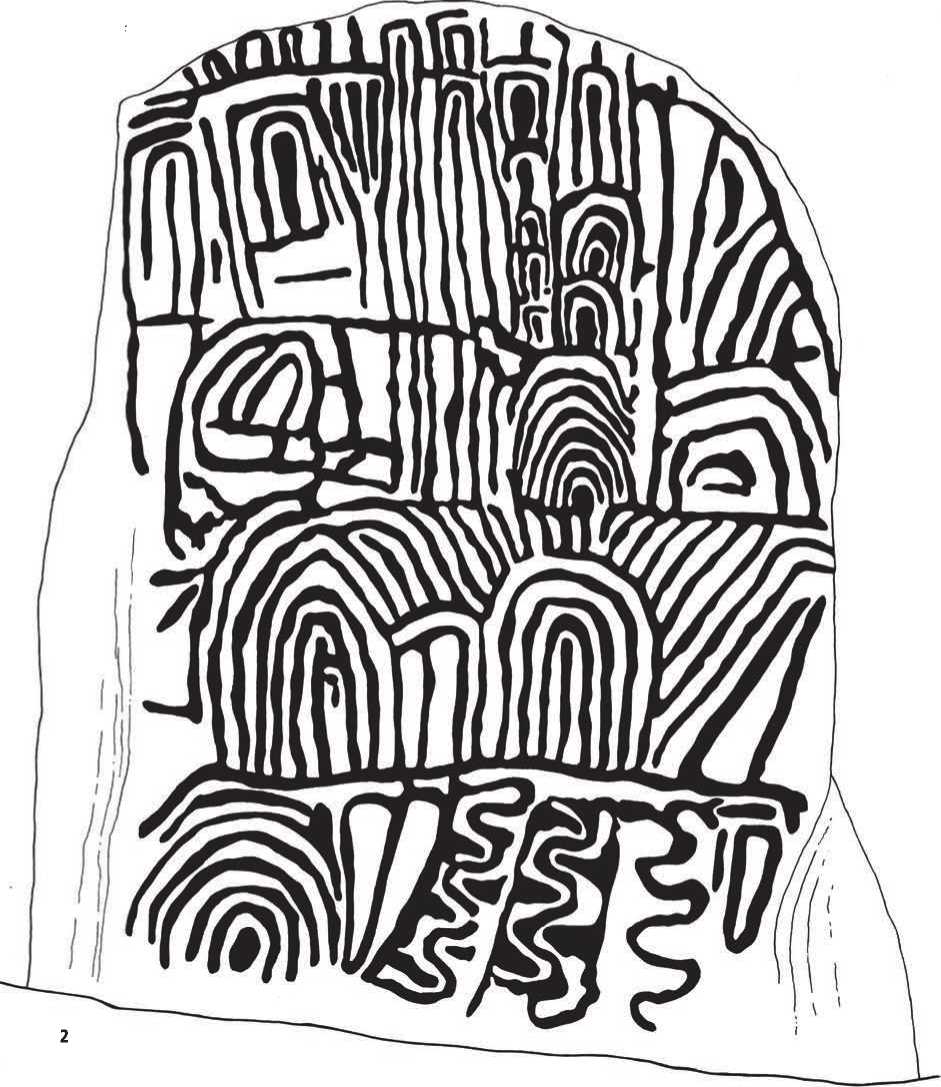
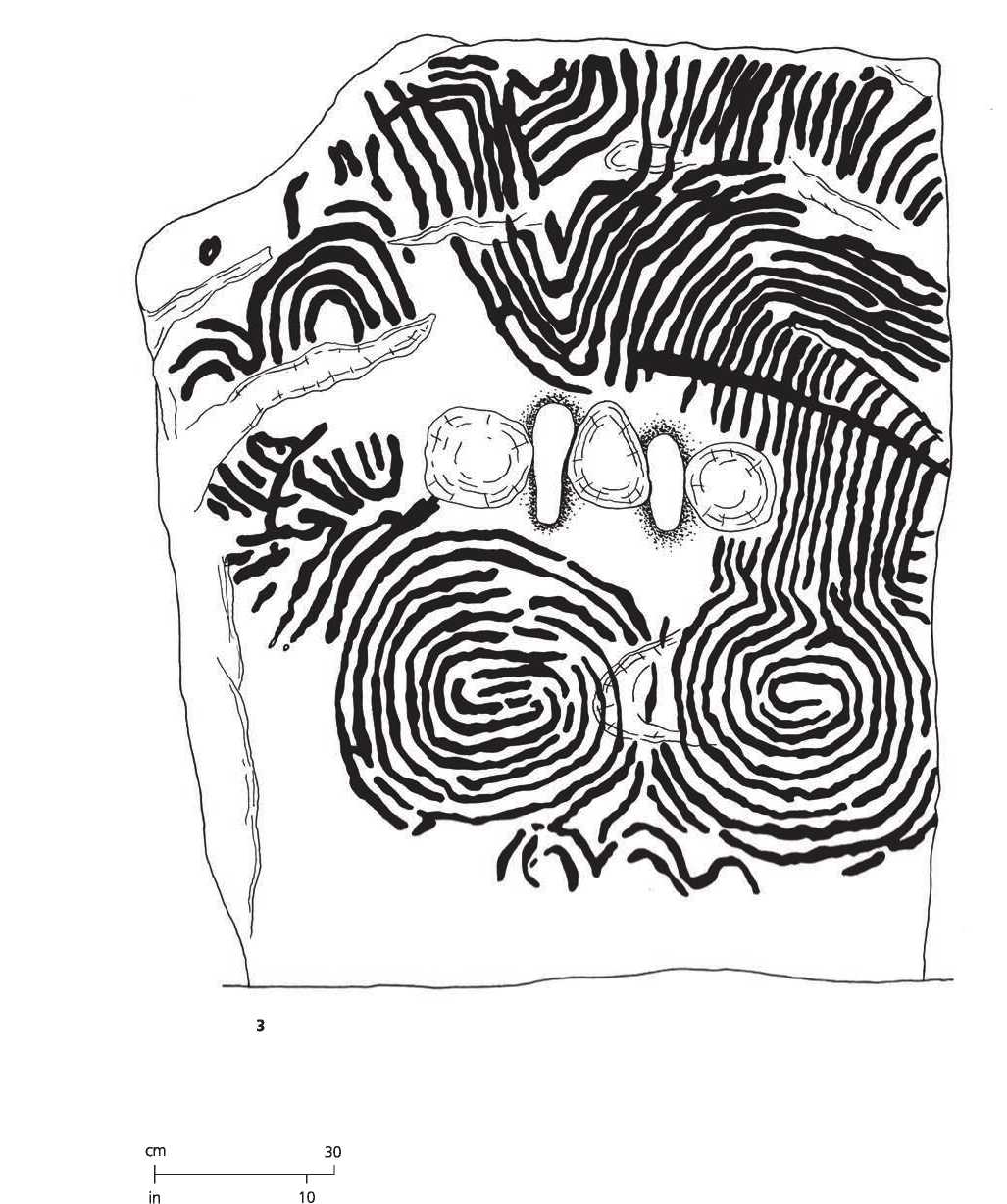
Figure 10.40: Gavrinis Cairn, Brittany, France, interior. Source: Andrew Ferentinos
Figure 10.42: View of interior, Gavrinis Cairn, Brittany, France. Source: Cedric Dauphin
Figure 10.41: View of exterior, Gavrinis Cairn, Brittany, France. Source: Cedric Dauphin
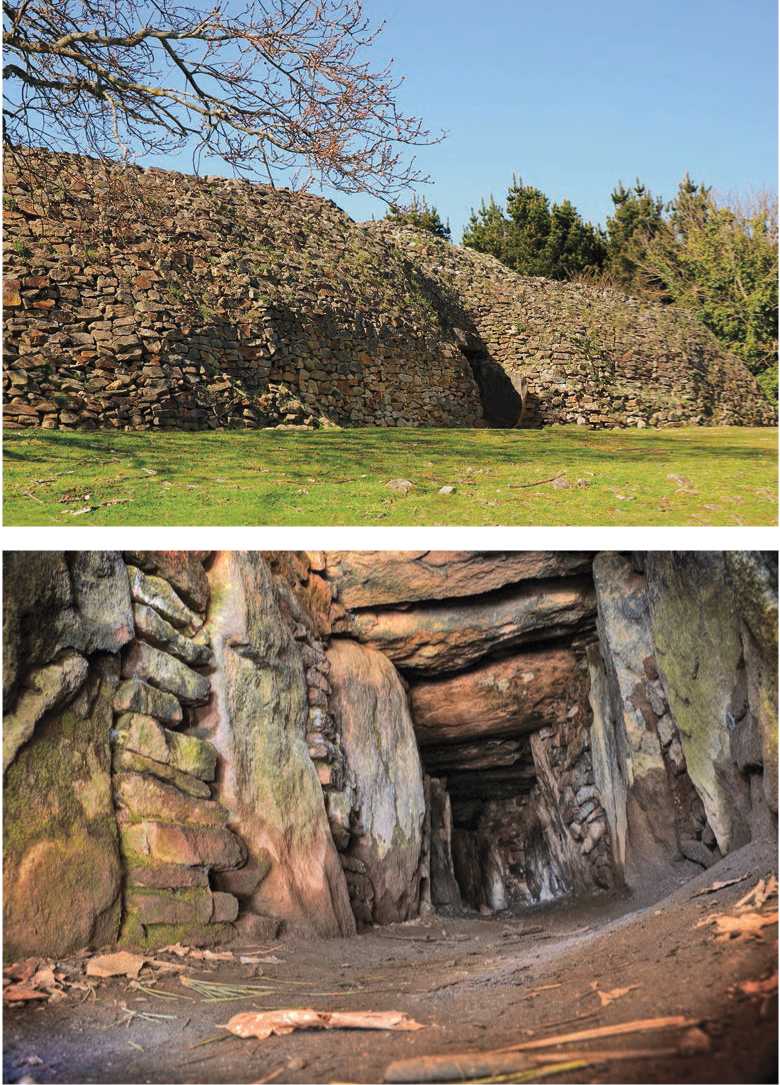




 World History
World History









